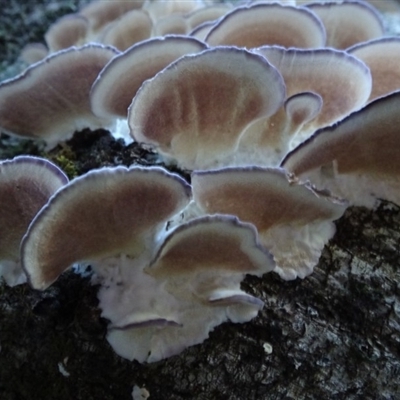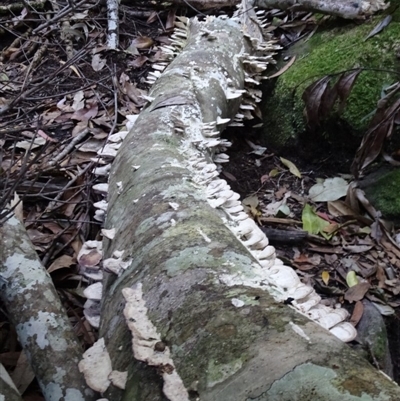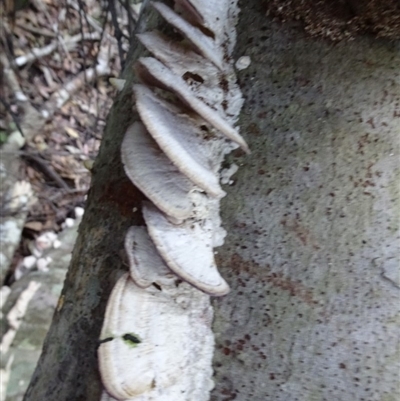Trichaptum species
Trichaptum biforme
Scientific name: Trichaptum biforme (Fr.)
Ryvarden
Derivation of name: Trichaptum means "with clinging
hairs"; biforme means "with two forms or stages" in reference
to the pore surface which can be either poroid or toothlike.
Synonymy: Polyporus biformis Fr. in Kl., Polyporus
pergamenus Fr.; Trichaptum pargamenum (Fr.) G. Cunn.;
Hirschioporus pergamenus (Fr.) Bondartsev & Singer
Common names: Violet-toothed polypore.
Phylum: Basidiomycota
Order: Polyporales
Family: Polyporaceae
Occurrence on wood substrate: Saprobic; solitary to
overlapping clusters on dead deciduous wood, rarely on
conifers; year-round.
Dimensions: Caps 1-7.5 cm wide and up to 3 mm thick.
Upper surface: White to grayish or brownish, greenish if
covered by algae; margin often purplish; zonate; hairy.
Pore surface: Purplish at first, fading to buff or brownish but
usually retaining violet tints near margin; poroid at first with
pores 2-5 per mm, becoming toothlike in age.
Edibility: Inedible.
Comments: A very colorful polypore when young. It can
occur in great numbers on the substrate. Compare to
Trichaptum abietinum which occurs almost always
on conifer wood and is generally smaller. Trichaptum
subchartaceum (not illustrated) is a boreal species that
grows only on Populus spp. (aspen, poplar) and does
not develop a conspicupus tooth-like lower surface.
Description taken from linke below - good photos
https://www.messiah.edu/Oakes/fungi_on_wood/poroid%20fungi/species%20pages/Trichaptum%20biforme.htm
Trichaptum species is listed in the following regions:
Species information
- Trichaptum species Scientific name
- Common name
- Not Sensitive
- Local native
- Non-invasive or negligible
- Up to 11.77m Recorded at altitude
- Machine learning









